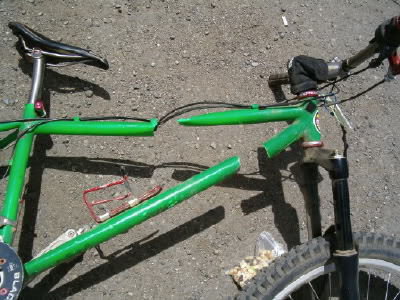How to Build a Steel Hardtail

The steel hardtail is the pipe body of the bicycle. It is made separately and wheel, handle and other accessories are then attached to it. The process is specialized and should always be performed at a proper workplace with requisite tools. If you are new to the process, ensure that you have some form of supervision. Ignoring these facts van result in an accident or injury. Also ensure that you a proper lighting at the workplace.
Instructions
-
1
The first step in build a steel hardtail is to draw a diagram showing the basic cut outs, cross sections and a general layout. This is the most important step and enough time should be spent on this to cater for all the fine details. Once you have started the manufacturing process, it is very difficult to adjust the dimensions, and there can be a lot of material and time wastage.
-
2
Now select a proper working place, most preferably a workshop. Put on proper clothes - an overall will be best - and other protective gear like gloves and safety glasses.
-
3
Now take a hollow steel rod and mark the point where it needs to be cut. Check the dimension of the hollow rod with a micro metre screw gauge before cutting. This step is to be repeated for all the rods as per the design.
-
4
Now use a cutting machine to separate a small piece of the hollow rod and secure it properly with a lathe machine. The lathe machine is used to add the finer dimensions.
-
5
The general design of the steel hard rail has normally three major joint where the rods meet. To ensure the joint welding process is used. Before you carry on the process, make sure that you have protective screen, rubber gloves and an air mask.
-
6
A small connecting rod holds two of the joints while supporting truss joint is added in the horizontal direction to add to the structure stability. Grinding process is also used to give shape and roughness to the small rods.
-
7
After the steel rail has taken the general shape, finer welds are made, and the rough edges are fined off with the help of a sand paper.
-
8
The internal surfaces of the pipe are then roughened so that they can ensure proper fixing. Grooves are then cut into the ends of the pipe which are to be fitted to the remaining assembly of the bicycle.
-
9
The steel hard rail is then taken to the paint shop, where it is coated with a fine layer of powder paint through ionization.
-
10
Tags are then added to the steel hard rail body.
-
11
The next step requires the assembly.







